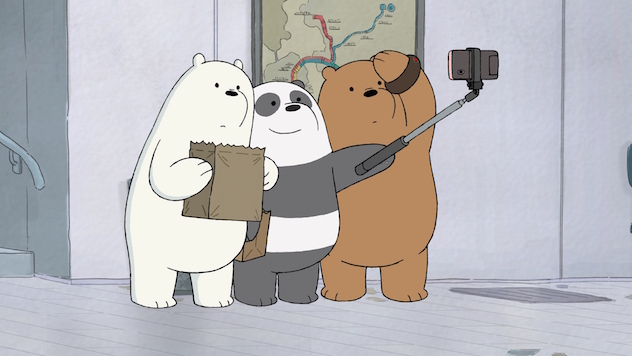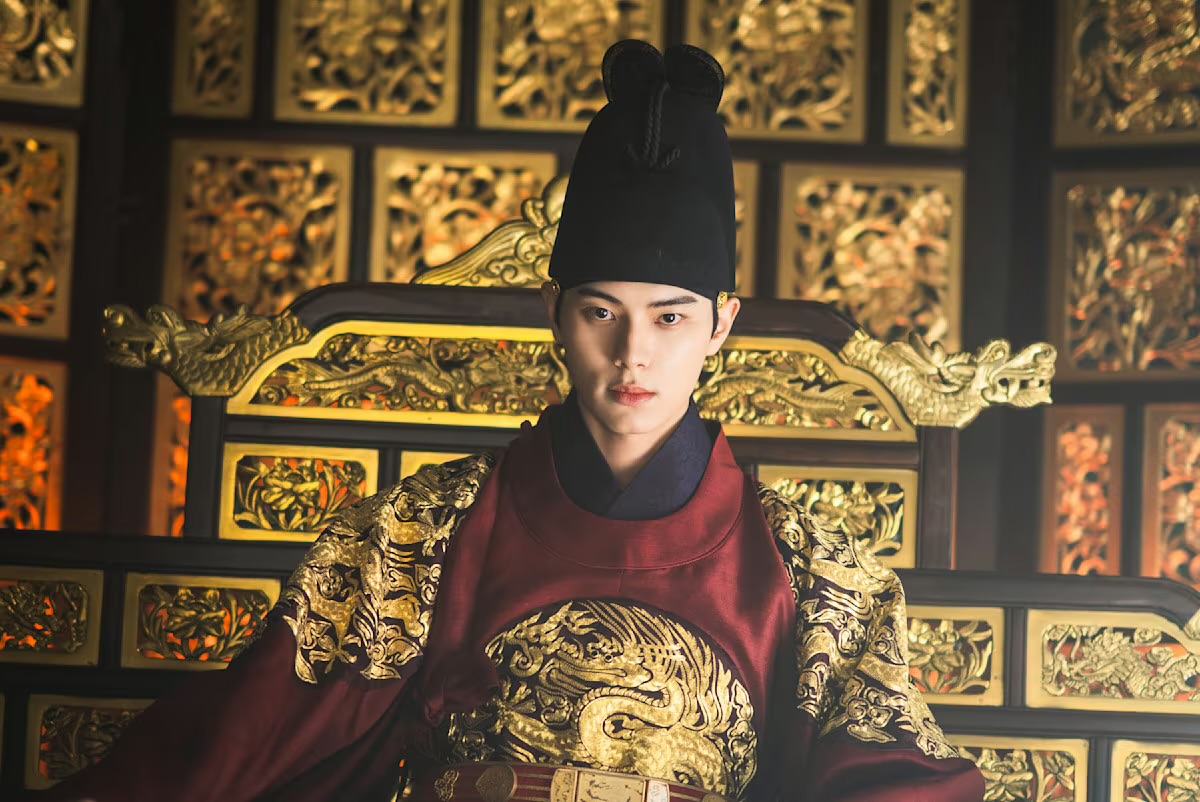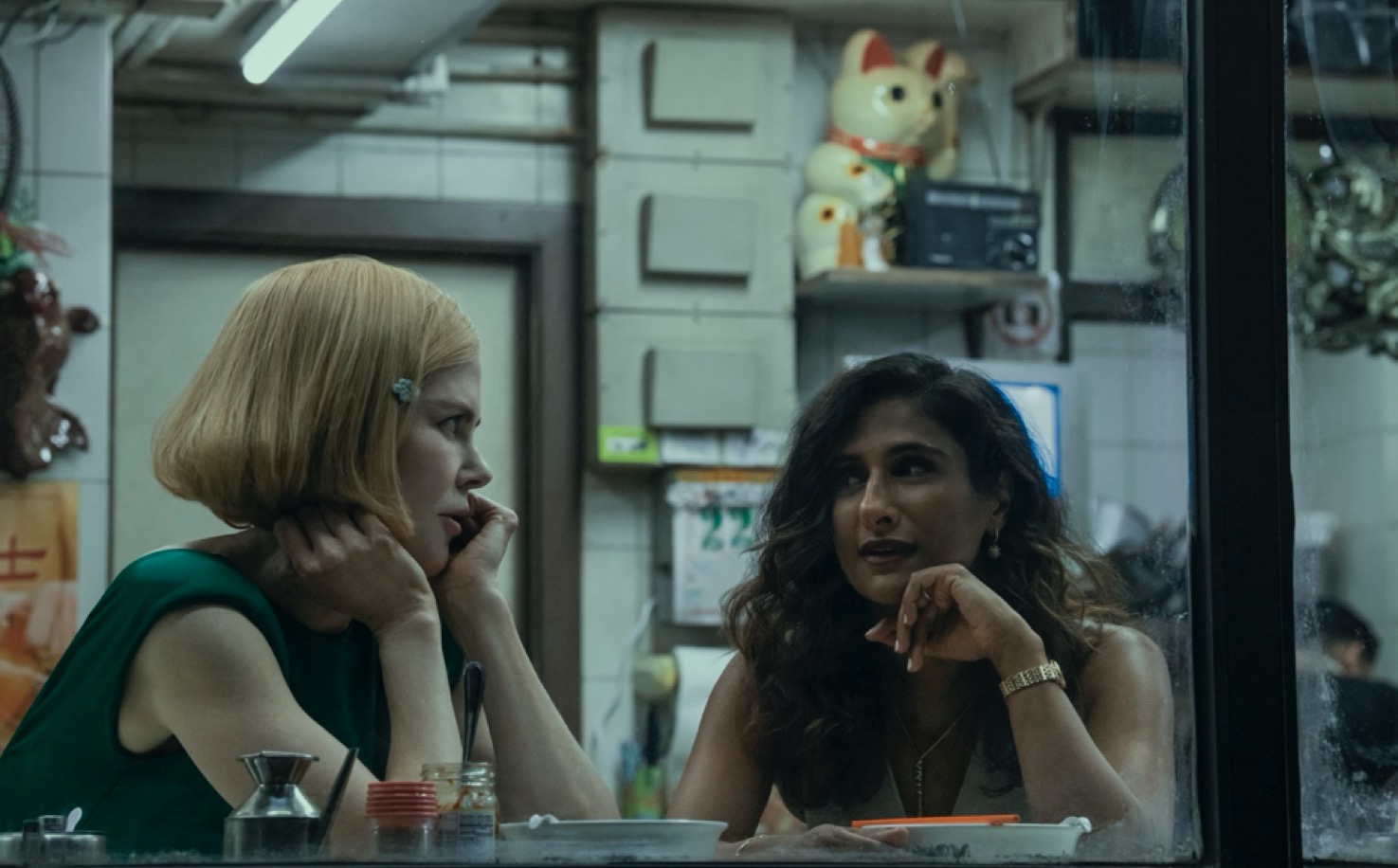Daniel Chong remembers getting up on Saturday mornings before 7 a.m. to marathon cartoons until “Soul Train” came on the air, signifying the end of animated programming.
“You know how different channels air different things at the same time? I would tape a show parallel to watching on another station,” the creator of Cartoon Network’s “We Bare Bears” recalled. He also loved to draw, and took his cues from newspaper comics like “Garfield” and “Calvin and Hobbes.” “I’d watch anything. ‘The Smurfs,’ ‘Muppet Babies’ … the ‘Care Bears’! No shame.”
Chong, whose parents are Singaporean Chinese immigrants, didn’t realize cartoons could be a career until college, when he got a degree in illustration at the California Institute of the Arts. Then it was off to storyboard at studios like Illumination Entertainment and Pixar.
“We Bare Bears,” which follows three adorable brother bears — Grizzly, Panda and Ice Bear — who try their best to become a part of human society in San Francisco, was first conceived as an online comic series, “The Three Bare Bears,” by Chong while he was at Pixar.
The animated comedy premiered in 2015 and has since aired more than 100 episodes, and been nominated for an Emmy in the Outstanding Short-Format Animated Program category.
Its fourth season premiered at the end of July. Kore spoke to Chong about the new season, T-Pain’s love for the show and why he sees “We Bare Bears” as bigger than himself or his team.

Daniel Chong (Courtesy photo)
So what was on the lineup on those Saturday mornings?
You know how different channels had different things on at the same time? I would always be taping something parallel to watching on another station. I would say mostly “The Smurfs,” “Muppet Babies.” Gosh, I’d watch anything. “Care Bears”! No shame.
Was there a reason you set “We Bare Bears” in the Bay Area?
I moved up to there for a job working at Pixar before coming back to L.A. Those were the most formative years of my life. I learned a lot about myself, about what matters to me and built my beliefs. That was the first big, bustling city I lived in. A lot of that influenced what “Bears” ended up being.
“We Bare Bears” is much about the world against the bears, but at the end of the day they never let themselves get down. Where does that stem from?
It’s from me, and it’s also my crew. I don’t catch on to negative things as quickly. That enables me to be a little bit more carefree when we write. A lot of our staff is also that way. In spite of all the negative things they’ve seen in the world, I think they all have a happy-go-lucky disposition. Grizz will never be deterred or too down. He will always persevere.

(Cartoon Network)
Going into Season 4, was there a goal in particular?
The studio and we were pretty set that on making very bear-centric episodes. We wanted to make sure the audience still remembered our main characters and that we didn’t drift too far away from the concept of the show. We have found different ways to spice things up, like getting really cool celebrities like T-Pain and Leslie Odom Jr. on the show. It’s been really fun to play with the versatility of the characters a little bit more.
How did the T-Pain guest spot happen?
T-Pain posted on Instagram like a year ago that he tattooed Panda on his hand. [Our team] was kind of were freaking out, so I DMed him on Twitter and was like, “Yo man, do you want to be on an episode?” He messaged me back right away saying, “I’m watching an episode right now!” He was so excited to do it. We wrote that episode around him. He was completely game to do whatever. He was awesome, so funny. He’s really supportive of the show and really likes it. We’re just lucky that people are willing to do it.
I’m just curious—who on your team is the K-pop fan?
Lauren Sassen, our creative director. She likes K-pop a lot. We have a lot of Korean story artists on our team. A lot of our crew in general, they understand Asian culture pretty well even if they’re not Asian.
That K-pop dance-off was amazing.
That was Madeline Sharafian. She doesn’t listen to too much K-pop, but she had a friend who is Korean who came in and basically showed her everything that was big. So she put in every dance move she could into that episode.
Has your vision for the show changed at all since Season 1?
The way that it changes for me is that I don’t feel like I need to dictate every decision anymore. We built a rapport with the crew, with the writers, with the story artists. At this point, they take ownership of the show in a much bigger way. They are the ones pitching new ideas and pushing the show in new directions that I probably wouldn’t have been able to anticipate. That’s what’s changed, my ability to accept more collaboration.
It’s like you had a baby and now you’re letting your baby meet other people.
Yeah! Everybody wants to raise the baby. It’s ready for me not to dictate everything all the time.
Two years ago, you tweeted about how “We Bare Bears” is a reflection of your Asian American identity and how alienating that can be at times. How do you continue to draw from that?
We did an episode called “Grizzly the Movie,” where he gets cast for a movie and he finds out that they didn’t want him to be a Grizzly. They want him to be a really mean, angry bear, and he starts seeing that as a stereotype. Then other bears become stereotyped because of that performance. We have intentions in upcoming episodes to really explore things like that in a heavier way. I think it’s very relevant. We just can’t be preachy.
How important was it for you to reveal that intention behind the show?
I felt like it needed to be expressed in that time specifically because I could see my crew was very disheartened by the events that were happening and where they thought the country was headed. So to me it was a way of saying, not just for the world but for the crew, “Hey, we’re going to still be who we are.” What we’re doing is entertainment, but this can be a bigger thing than us. We can make a difference in the world by putting something positive out there.
We Bare Bears appeals to both children and adults. What goes into making a show like this?
A lot of that is our taste. We’re entertaining ourselves, first and foremost, and trying to make ourselves laugh. As we were going, the network would just respectfully remind us, “Don’t forget to make this accessible for younger people.” We might have skewed a little bit on the older side hoping that kids would catch up.
What kinds of storytelling do you want to do with “We Bare Bears” going forward?
We don’t do a whole lot of continuity on our show, but one is a story called “Icy Nights.” It’s Ice Bear going on an adventure by himself. It started as a goofy love letter to the movie “Drive.” We did a second one, and now the pressure’s on to do another one. I’m excited about it because it’s a chance to do a longer story and an arc of some sort, and pay off a lot of things we’ve been— annoyingly!—setting up. That’s another step for our show.
Do you have advice for young people who want to do what you’re doing?
Back when I was young, I barely had the conception that people were doing this as a job. You just accept that cartoons exist. You never think that someone actually made that and got paid money to do it. I would say the biggest thing I think kids can do if they want to someday have their own show is to make their own thing. People might think you have to wait for a break. But honestly, you have to be ready for an opportunity when it comes, and a lot of that comes from doing your own thing and training and doing it yourself.
I did that a lot myself too, but I didn’t know what I was training for when I was making films or creating my own characters. In hindsight, it all makes sense. This generation has the technology, the capability, the access to things way more than I ever did. Take advantage of it.







